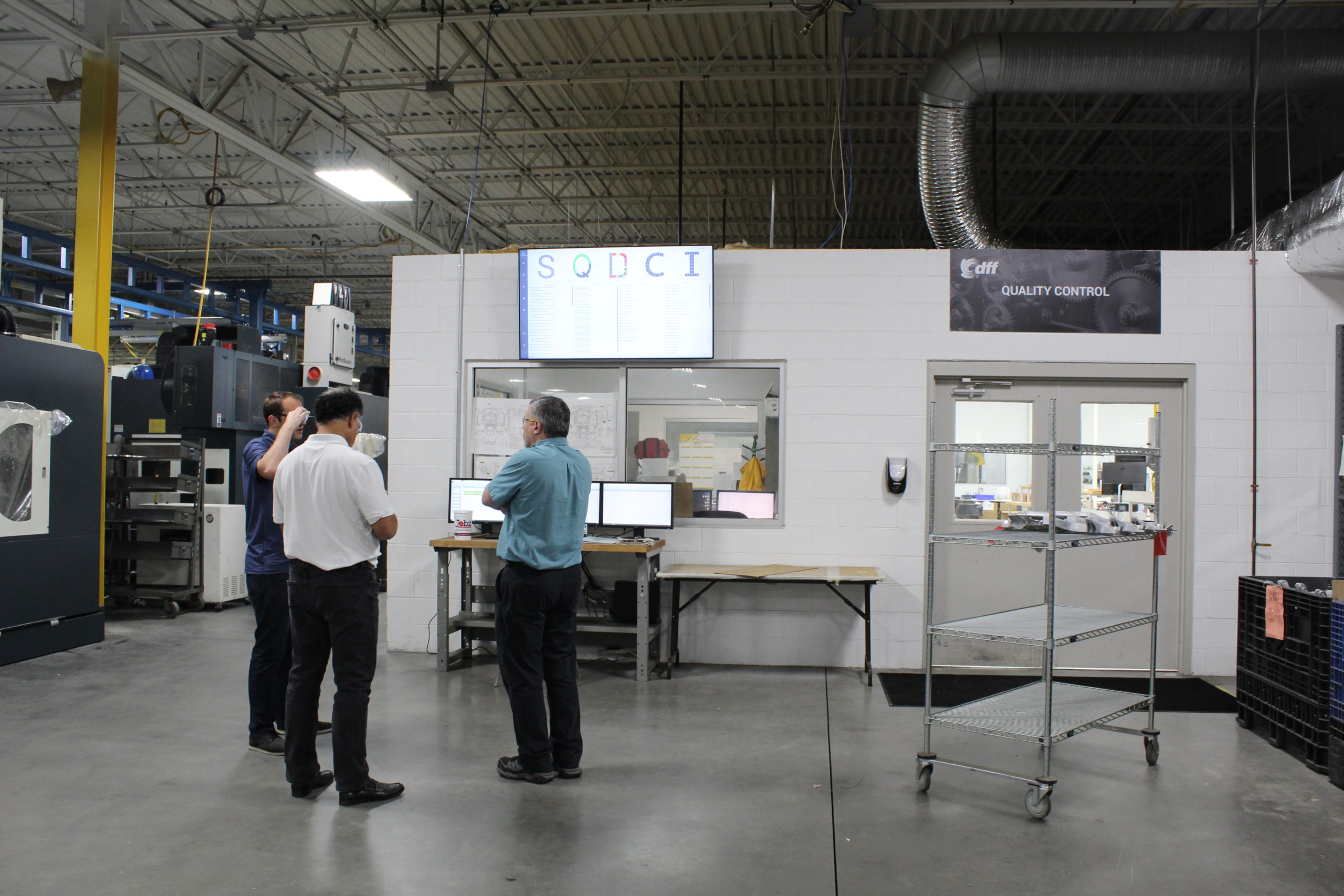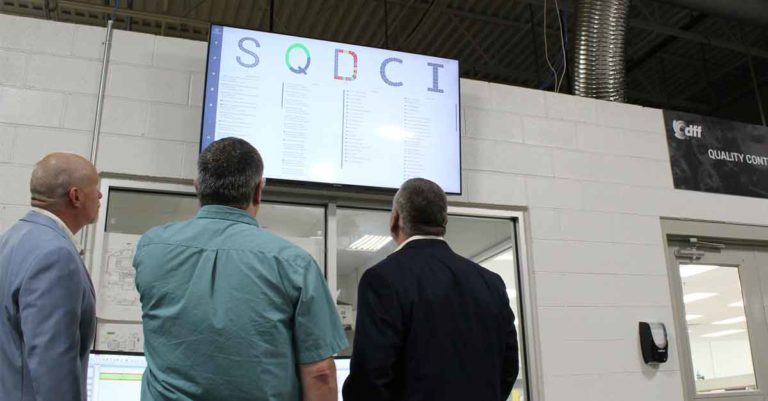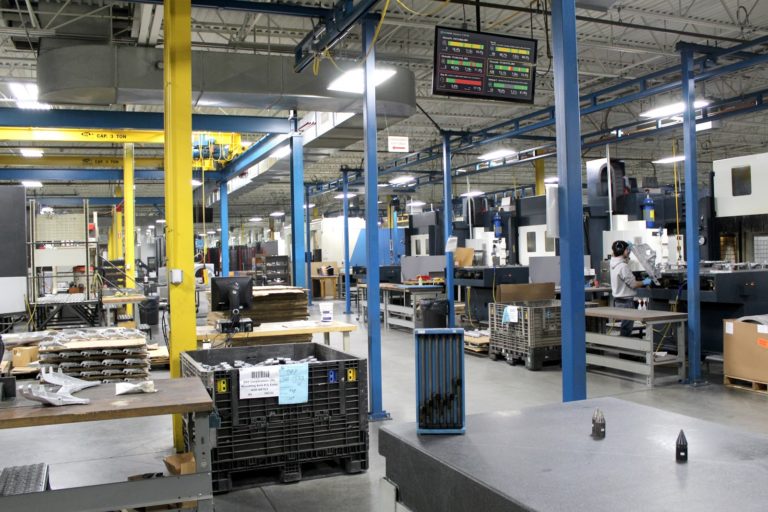What We Built: Digital GEMBA™ Boards
Every time we do something new here at Datanomix, my role as a co-founder and CTO is to give a quick and dirty rundown of the what and the why. Usually, these are pieces about a particular new feature, such as a report or a workflow, but we are introducing an entirely new product in this case.

As detailed on our company page, we set out to build software products that are good enough in quality, usability, and reliability that you should think of them as a member of your team. Every time we hear a new pain point or challenge from a customer, we take them personally as an opportunity—if we are in a position to help, and many customers share that pain point, we’ll do everything in our power to deliver a solution.
Some of our greatest innovations as a company have evolved through this process. Our Coffee Cup Report was derived by sitting with a production lead early in the morning and reviewing yesterday’s performance as prep for the AM production meeting to give back 60 minutes of chasing people, paper, and parts. Our Quote Calibration Report was spawned in our early days when a customer said, “you guys already know my jobs better than I do. Can you make your performance capability available so I can compare them to my quotes?” Now we have dozens of customers reviewing the quote calibration page as a proxy for new business and job costing.
So how did we end up in the Digital GEMBA Board business? By once again listening to our most significant source of inspiration—you!
It was late spring of 2020, the peak of the COVID pandemic, and one of our customers asked if we’d be willing to discuss a burning problem they were contemplating as they looked at severe increases in the forecast over the next couple of years. A few days later, we were given a detailed presentation on how this customer needed to leverage more intelligence from their ERP system to understand factory KPIs, improve the predictability of delivery, clearly prioritize, and plan their work. The catch: they believed it should be an entirely digital system. Already familiar with the classic GEMBA process, we were intrigued.
I quickly picked up the phone and called a few other customers to understand how they currently do GEMBA, how information is collected, how much time they spend on manual steps, and what they wished could be easier about the whole process. Everyone confirmed what we had already seen elsewhere: GEMBA boards are an invaluable tool for tracking the highest levels of business performance, everyone in an organization, from the President downward, takes their daily walks very seriously, and they all believed there was more opportunity for their GEMBA boards to be a greater source of information and insight.
Armed with motivation, our team went to work. We participated in GEMBA walks, watched ERP data collection processes, watched how work cell assignments and priorities are communicated and looked for the highest value common denominator elements to build something useful to a broad audience. What we saw happening in ~45 minutes per GEMBA board could probably be accomplished in ~15 minutes if there wasn’t so much manual data. Those remaining 30 minutes could be spent on higher value and faster discussions on more time-critical information.
The Digital GEMBA Board
At the highest level is our Digital GEMBA Board—a fully interactive display of the standard Safety, Quality, Delivery, Cost, and Inventory metrics updated in real time with streaming data from the ERP system. Our goals for the Digital GEMBA Board were pretty simple:
- The GEMBA Board should report to you instead of you having to collect all the data by populating it yourself
- If you don’t like a KPI result on the GEMBA Board, you should be < 5 clicks away from why
- Since performance on these KPIs directly affects job status, you should be able to see high-priority jobs and statuses in a quick glance
- Gemba boards and continuous improvement go hand in hand. Time to information and organizational velocity must improve dramatically with the advent of Digital Gemba.
If you see a particular metric you want to drill down into, such as why our quality has been trending the past few days, you click on the metric of interest (Q in this case). You are given the breakdown of every job in the relevant timeframe contributing to that metric and all of the associated details, such as inspection steps, who performed the inspection, and where the parts are today.
As I mentioned earlier, transforming the GEMBA Board from a place of status to a place of insight was one of our primary goals. In addition, we felt the Digital GEMBA Board was a great place to marry metrics with planning. You can see on the Main GEMBA Board below the SQDCI metrics that each area of the factory is given its own section, with clear job assignments and statuses. How these get, there is the topic of our next section.
Operational Readiness Board (ORB)
Many factories do cell-based planning—which jobs are running today, which are in the queue, and which are our “hot jobs.” To integrate this workflow into the GEMBA process, we created Operational Readiness Boards, also known as ORBs. ORBs allow any supervisor to create the queue of work by machine center, set priorities, assign employees, and ultimately have their real-time status communicated out on the main GEMBA Board.
Supervisors punch in a job number to add it to a machine, assign employees, and the balance of job information is automatically retrieved and populated from the ERP system. As a work cell planning tool, these ORBs serve as the place employees go when on the floor to review job assignments and priorities. During the morning GEMBA walk, the hottest jobs appear in red on the GEMBA board, and it is easy to scroll through each work cell to see where critical jobs and parts stand concerning estimates and plans.
We have seen a lot of homegrown work cell planning tools in our travels, ranging from spreadsheet interfaces to custom databases and web apps. Integrating work cell planning and prioritization as a digitally native task that feeds automatically to GEMBA boards is a surefire way to maximize visibility and opportunity.
Demand for our Digital GEMBA Boards is hot, and we are getting asked a lot about which ERP systems we work with. The current list of those can be found under our GEMBA faqs. If you are interested in seeing a demo of our Digital GEMBA solution, give us a shout!





